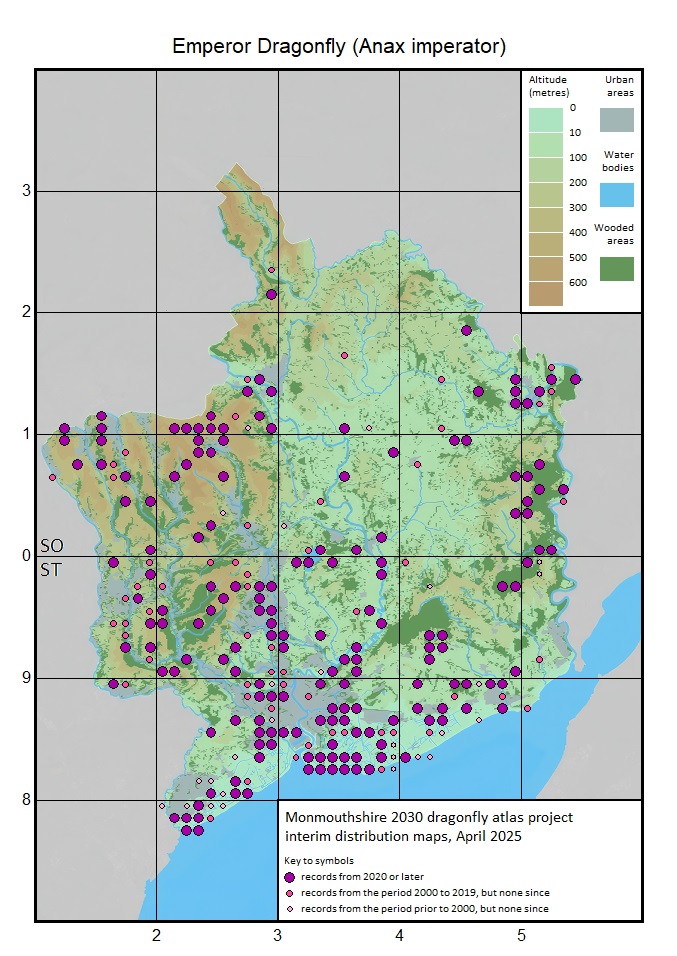Dragonfly species in Monmouthshire: Emperor Dragonfly

Emperor Dragonfly (Anax imperator) is one of the most common and widespread of the larger dragonfly species in the county; it can be expected at any standing water habitat of reasonable size and along slow-flowing rivers.
The oldest record in our data set is from near Whitson on the eastern Gwent Levels, on 30 July 1978 (observer D. A. Rodway).
Current distribution in the county: what we know
Emperor Dragonfly occurs widely across the county: on the Gwent Levels, around Newport, in Torfaen, through the western valleys and the northwest uplands, around Abergavenny and Monmouth, and through the Usk and Wye valleys.
Current distribution in the county: what we don’t know
There are large gaps in the mapped distribution, however. As with many species, there are large areas in the north and east of the county with no records at all, or with only older records. This is almost certainly because no-one has visited sites in these areas recently to record dragonflies, rather than because the species is not present: there is much suitable habitat there.
Emperor Dragonfly is also likely to be more widespread across the Gwent Levels than the map indicates: it is likely to still be present in parts of the levels where there are only older records, and the lack of recent records here is probably due to lower levels of recording away from the well-visited sites such as Uskmouth and Magor Marsh.
Distribution elsewhere
Emperor Dragonfly is a common species throughout Wales, missing only from high altitudes in the northwest. It is also common throughout England, except in the Pennines and Northumberland; in Scotland it is mainly found in the southwest and on parts of the east coast. Elsewhere in Europe, it is found from Portugal and southern Ireland east to Russia, and from the Mediterranean north to the Baltic. Its world range extends east to western Asia and south across much of Africa, and it is also found on Madeira, the Canary Islands and the Azores.
